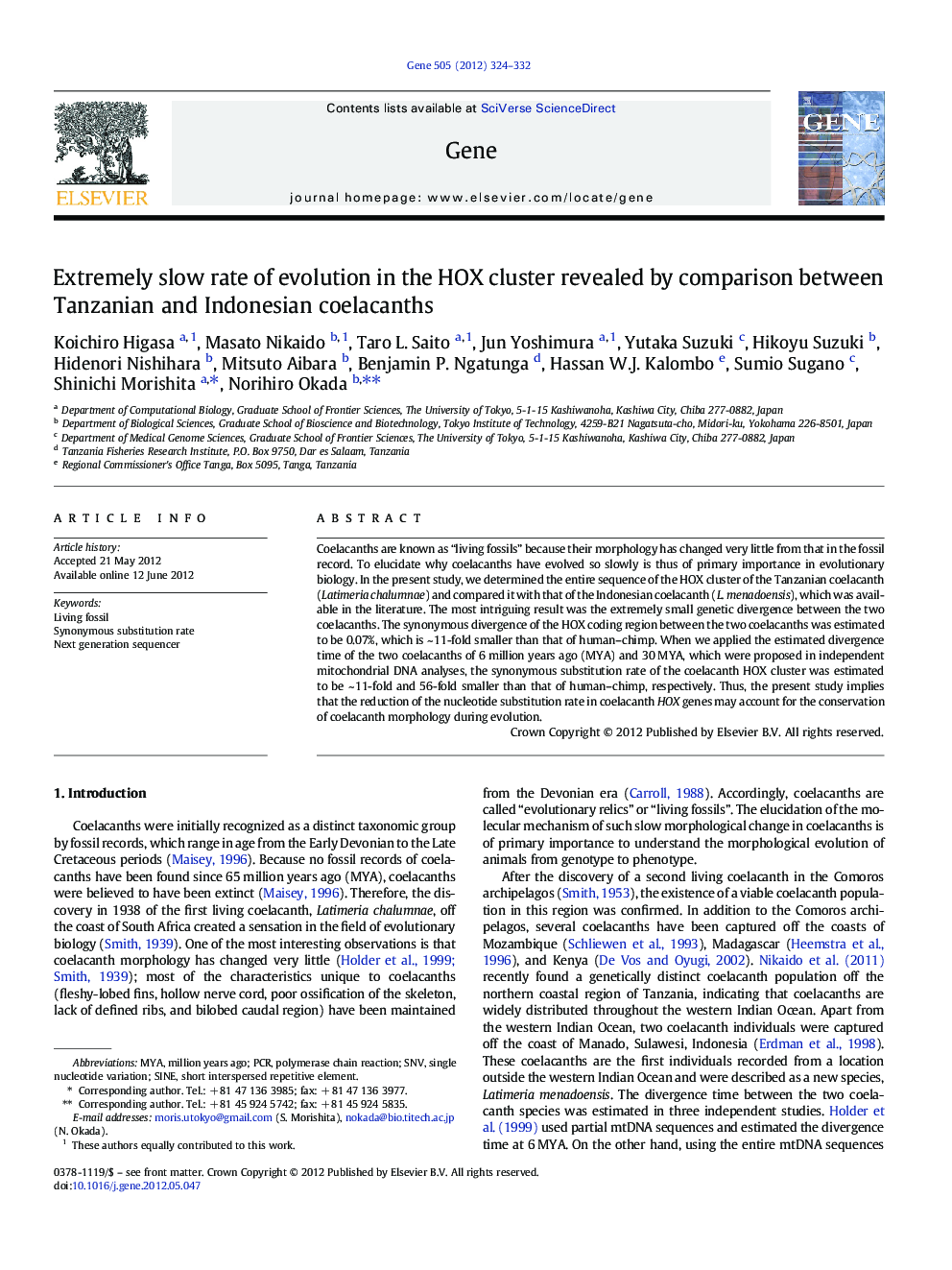| Article ID | Journal | Published Year | Pages | File Type |
|---|---|---|---|---|
| 2817771 | Gene | 2012 | 9 Pages |
Coelacanths are known as “living fossils” because their morphology has changed very little from that in the fossil record. To elucidate why coelacanths have evolved so slowly is thus of primary importance in evolutionary biology. In the present study, we determined the entire sequence of the HOX cluster of the Tanzanian coelacanth (Latimeria chalumnae) and compared it with that of the Indonesian coelacanth (L. menadoensis), which was available in the literature. The most intriguing result was the extremely small genetic divergence between the two coelacanths. The synonymous divergence of the HOX coding region between the two coelacanths was estimated to be 0.07%, which is ~ 11-fold smaller than that of human–chimp. When we applied the estimated divergence time of the two coelacanths of 6 million years ago (MYA) and 30 MYA, which were proposed in independent mitochondrial DNA analyses, the synonymous substitution rate of the coelacanth HOX cluster was estimated to be ~ 11-fold and 56-fold smaller than that of human–chimp, respectively. Thus, the present study implies that the reduction of the nucleotide substitution rate in coelacanth HOX genes may account for the conservation of coelacanth morphology during evolution.
► We sequenced the HOX cluster of the Tanzanian coelacanth. ► The genetic divergence between two coelacanth species is very small. ► The slow substitution rate may account for the slow rate of coelacanth evolution.
